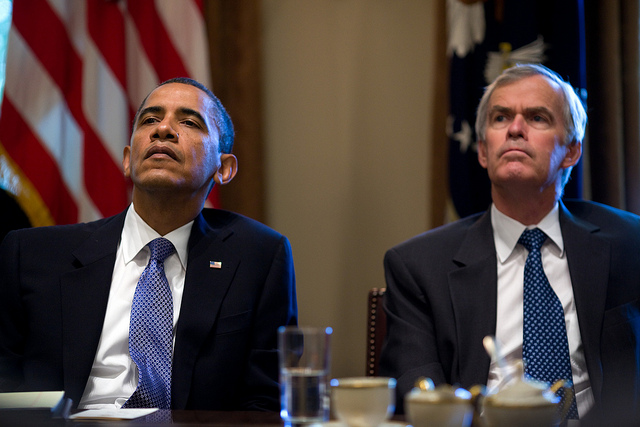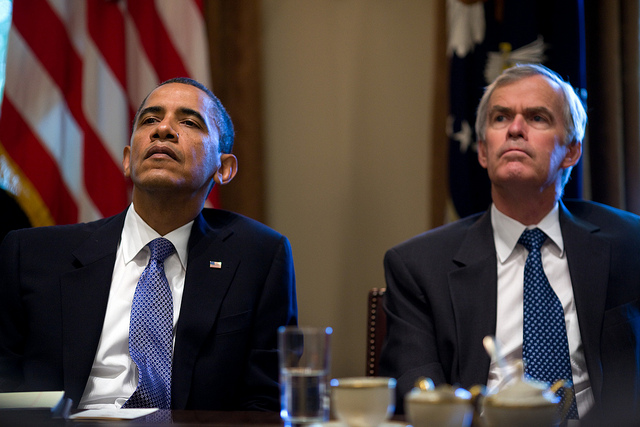 Is Obama wasting Sen. Bingaman’s time?Photo: The White HouseIn his State of the Union speech, Obama introduced an ambitious plan to encourage clean energy in the U.S. At least I think it was ambitious. Kinda hard to tell — it was vague.
Is Obama wasting Sen. Bingaman’s time?Photo: The White HouseIn his State of the Union speech, Obama introduced an ambitious plan to encourage clean energy in the U.S. At least I think it was ambitious. Kinda hard to tell — it was vague.
Thinking about it since, I’ve come to see the Clean Energy Standard (CES) as paradigmatic of Obama’s energy initiatives. It is well-meaning and makes a certain internal sense, but politically it’s ham-handed and tin-eared. Like his freelancing on offshore oil last year, it undercuts existing congressional efforts while doing little to build new coalitions.
Now the CES is hanging out there in limbo. It’s too important to Obama for congressional Democrats to ignore. But it’s not important enough to Obama for him to take an active role in shaping and pushing it forward.
The unenviable task of translating Obama’s hopey-changey into legislation falls to Sen. Jeff Bingaman (D-N.M.), chair of the Senate Committee on Energy and Natural Resources. By all accounts, he would much rather ignore it altogether. He’s been working on a Renewable Energy Standard (RES) for quite some time and got one through his committee in 2009. It wasn’t particularly strong, but it passed with bipartisan support. It was a foundation, developed over years of discussion and compromise.
The CES, on the other hand, hasn’t undergone any such scrutiny or development. In effect, Bingaman is being forced to start all over again. (That may not be why he’s retiring, but I’m sure it didn’t entice him to stay.)
On Monday, Bingaman and his cochair Lisa Murkowski (R-Alaska) released a white paper to solicit feedback, laying out the questions that have to be answered and the design decisions that have to be made for the CES to become a reality. Reading it over, it becomes clear just how shapeless the policy really is. In their first paragraph, they ask:
Is the goal to reduce greenhouse gas emissions, lower electricity costs, spur utilization of particular assets, diversify supply, or some combination thereof?
It’s a pretty good rule of thumb that if you can’t lay out the goals of your policy clearly, you’re unlikely to design it well.
Among the issues to be addressed:
- What counts as clean energy? Is it based on carbon or other pollutants too? Should partial credits be given to partially clean sources? Will efficiency count? Demand response? CHP?
- How should the federal CES interact with state RES programs, which include a more restricted set of sources? Will it preempt them or complement them? Should a CES credit count as an RES credit or vice versa?
- What electricity mix do we want? Should we have individual targets or minimums for individual sources?
- How much will it cost and what cost control mechanisms will it contain?
And so on.
Most of these questions had been answered for Bingaman’s RES. That bill probably wouldn’t pass Congress today, what with all the Tea Baggery. But it’s hard to see a CES passing either. It’s certainly hard to imagine anything deserving of climate hawk support resulting from the utterly open-ended process being launched in the midst of a time of conservative backlash.
Given my current state of high cynicism, I would be gobsmacked if anything substantive on clean energy passed this Congress. Odds are, the long, tortured process of developing a CES — replicating so much work done in the past, much of it by Bingaman himself; offering up yet another round of compromises — will amount to yet more time wasted. That’s a pretty grim note on which to end a career in public life.



